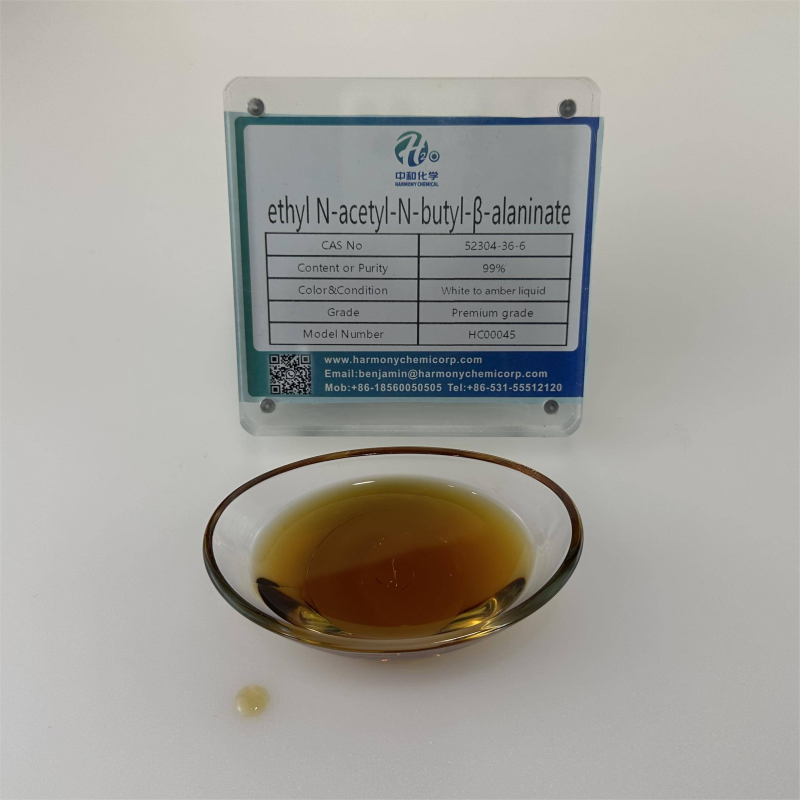Epidural AdministrationofRopivacainehydrochloride monohydrate effectivelyblockneuroethicpain(bothmechanicalallodyniaandheathyperalgesia)withoutinductionfanalgesictoleranceandsignificantlydelaystheevelopment ofneuropathicpain producedbyperipheral nervenjury.Ropivacainehydrochloride inhibitionpressure-inducedincreasesinfiltrationcoefficient(Kf)withoutaffectingpulmonaryarterypressure (Ppa), Pulmonary capillary pressures(Ppc),andzonalcharacteristics(ZC).Ropivacaine hydrochloride monohydrate preventspressure-induced lungedemansociatedhyperpermeability yasevidencebymaintainingPaO2,lungwet-to-dryrati
Contact Now
Tetracaine hydrochloride is used for mucosal floor anesthesia, conduction anesthesia, epidural anesthesia, and subarachnoid anesthesia; Used for ophthalmic floor anesthesia, barring constricting blood vessels, detrimental corneal epithelium, and growing intraocular pressure.nameTetracaine hydrochlorideCAS NO136-47-0Molecular formulaC15H25ClN2O2melting point149°Cdensity1.1279 (rough estimateStorage conditions2-8°Csolubilityalcohol: solublesoluble 40 parts of solventformneatcolourWhite to Almost whiteSOLUBLESoluble in water at 50mg/ml
Contact Now
namePropitocaine hydrochlorideCAS NO1786-81-8Molecular formulaC13H21ClN2Omolecular weight256.77melting point168-170°CStorage conditions2-8°CsolubilityFreely soluble in water and in ethanol (96 per cent), very slightly soluble in acetoneformneatcolourWhite to Off-WhitePrilocaine hydrochloride is a kind of local anesthetic of aminoamide. Pirocaine is commonly used in dentistry. Procaine is also often used in combination with Lidocaine as a preparation for skin anesthesia (Lidocaine/Procaine or EMLA) to treat sensory abnormalities and other conditions.
Contact Now
nameLevamisole hydrochlorideCAS NO16595-80-5Molecular formulaC11H13ClN2Smolecular weight240.75melting point266-267 °Cflash point9℃Storage conditions2-8°Crefractivity-126 ° (C=1, H2O)formCrystalline PowdercolourWhite to almost white
Contact Now
melting point86-88 °C(lit.)Storage conditions2-8°CformPowdercolourWhite to off-whitepH value4.0 to 6.5(50g/L, 25 ℃)SOLUBLEsolubleCAS NO1670-14-0Molecular formulaC7H9ClN2molecular weight156.61EINECS number216-795-4
Contact Now
nameUrapidil hydrochlorideCAS NO64887-14-5Molecular formulaC20H30ClN5O3molecular weight423.94melting point156-1580CStorage conditionsKeep in dark place,Inert atmosphere,Room temperaturesolubilityH2O: solubleformsolidcolourwhiteSOLUBLESoluble to 50 mM in water
Contact Now
nameDapoxetine hydrochlorideCAS NO129938-20-1Molecular formulaC21H24ClNOmolecular weight341.88melting point175-1790CStorage conditionsroom tempformpowdercolourwhitesolubilityDMSO: ≥20mg/mL
Contact Now
Melting Point180-185 °C(lit.)Density1.18 g/mL at 25 °C(lit.)Refractivityn20/D 1.465Storage Conditionsroom tempSolubilityH2O: 6 M, clear, colorlessFormCrystalsColourWhite to slightly yellowPh Value4.5-5.5 (100g/l, H2O, 20℃)1. It can be used as an intermediate in medicine, pesticides, dyes, and different natural synthesis.
Contact Now
namePramoxine hydrochlorideCAS NO637-58-1Molecular formulaC17H28ClNO3molecular weight329.86melting point181-183°Storage conditionsInert atmosphere,Room TemperaturesolubilityChloroform (Slightly), Methanol (Slightly)formneatcolourWhite to Off-White
Contact Now
nameLinocaine hydrochlorideCAS NO6108-05-0Molecular formulaC14H25ClN2O2molecular weight288.82melting point75-79℃Storage conditions2-8°CsolubilityH2O: solubleformsolidcolourwhiteSOLUBLESoluble in water (50 mg/ml), chloroform, ethanol, and benzene. Insoluble in diethyl ether.
Contact Now
nameEsmolol hydrochlorideCAS NO81161-17-3Molecular formulaC16H26ClNO4molecular weight331.83melting point48-50°Cdensity1.026Storage conditions−20°CsolubilityH2O: soluble12mg/mLformbuffered aqueous solutioncolourWhite to Off-White
Contact Now
Polyamide resin, as a massive quantity of engineering plastics, is extensively used in fields such as machinery, automobiles, electrical appliances, cloth equipment, chemical equipment, aviation, metallurgy, etc.Becoming an fundamental structural fabric in a number industries, its most important traits are as follows:1. Excellent mechanical properties. Nylon has excessive mechanical energy and precise toughness.2. Good self lubrication and friction resistance.
Contact Now
nameNitazoxanideCAS NO55981-09-4Molecular formulaC12H9N3O5Smolecular weight307.28melting point202°Cdensity1.629 g/cm3Storage conditions2-8°CsolubilitySoluble in DMSO (>50 mg/ml)formsolidcolourOff-white
Contact Now
Melting point<-20 ° Boiling factorbp0.2108-110 °;Bp0.5126-127 °density0.987 ± 0.06g/cm3 (Predicted) refractive index nD201.452-1.455 flash factor318 ° F (159 ° C) storage prerequisites: SealeddryRoomTemperatu shapeOil Overview: Mosquito repellent, additionally recognized as butyl acetaminopropionate ethyl ester, BAAPE, IR3535, and Iminin, is a plasticizer and a broad-spectrum, environment friendly low toxicity insect repellent.
Contact Now
Polyisoprene rubber (IR) is a artificial rubber compound organized through answer polymerization of isoprene monomers underneath the motion of a catalyst. It has a chemical composition, three-d structure, and mechanical residences comparable to herbal rubber, as properly as true uncooked fabric strength, simple viscosity, getting older performance, and rebound performance.
Contact Now
nameAlbendazoleCAS NO54965-21-8Molecular formulaC12H15N3O2Smolecular weight265.33melting point208-210 °Cdensity1.2561Storage conditions2-8°CformneatcolourWhite to Off-WhiteSOLUBLE0.75mg/L(209 ºC)
Contact Now
nameL-ProlinamideCAS NO7531-52-4Molecular formulaC5H10N2Omelting point95-97 °Cboiling point213.66°C (rough estimate)refractivity1.4720 (estimate)Storage conditionsKeep in dark place,Inert atmosphere,Room temperaturesolubilityChloroform (Slightly), Methanol (Slightly)formPowder or GranulescolourWhite
Contact Now
CAS NO90-15-3Molecular formulaC10H8Omelting point94-96 °Cboiling point278-280 °Cdensity1.224flash point125 °CStorage conditionsStore below +30°CsolubilitySoluble in benzene, chloroform, ether and ethanol.formCrystalline Flakescolourwhite to off-white
Contact Now
1. Insulating carbon black is no longer non-conductive, however its leakage cutting-edge is very small or inside the limit, which potential it can't be pure gold. Our insulation carbon black has an insulation resistance of over 1014 Ω, and beneath sure conditions, the DC micro modern-day can be decreased to beneath 10-16A.2.
Contact Now
Chemical factor structure mannequin of petroleum resin:The most commonly used petroleum resin manufacturing applications are C9 petroleum resin and C5 petroleum resin.C9 petroleum resinC9 petroleum resin mainly refers to a resinous substance formed via polymerization of olefins or cyclic olefins containing nine carbon atoms or copolymerization with aldehydes, fragrant hydrocarbons, terpene compounds, etc.C9 petroleum resin, also acknowledged as aromatic petroleum resin, can be divided into sorts such as hot polymer
Contact Now
AppearanceAmber obvious liquidSolid content% ≥ 40.0Density (20 ℃)g/cm3 ≥ 1.20PH fee (1% aqueous solution)9.0-11.0Solubility15gPolyaspartic acid (PASP) belongs to a crew of polyamino acids. Polyaspartic acid is susceptible to breakage due to the motion of microorganisms, fungi, and different factors, ensuing in the degradation of environmentally pleasant ammonia, carbon dioxide, and water. Therefore, polyaspartic acid has a extensive vary of uses.
Contact Now
Chinese nameSodium oleateChinese aliascis 9-octadecenoic acid sodium salt; (Z) -9-octadecenoic acid sodium salt -9-octadecenoic acid sodium salt; 9-Octadecylic acid sodium; Sodium octadecene; (Z) -9-Octadecylic acid sodium salt;English nameSODIUM OLEATEEnglish aliascis Oleate sodium salt; Cis-9-Octadecenoic acid sodium salt, Oleic acid sodium salt; Eurol; Pionin D 951P; Oleic Acid Sodium Salt;CAS number143-19-1Molecular formulaC18H33NaO2Molecular weight304.44300Precision quality304.23800PSA40.13000Sodium oleate, additionally acknowledged as sodium octadecene, cis 9-octadecenol,
Contact Now
Oil soluble nano iron 1% - 10%, naphthenic acid 5% - 25%, barium naphthenate 10% - 30%, polyisobutene succinimide 5% - 10%, long-chain fatty acid 1% - 5%, and the relaxation is solvent. The instruction technique is as follows: add naphthenic acid drill, barium naphthenate, oil soluble nano iron and long-chain fatty acid into the solvent in flip at room temperature in accordance to the ratio, stir evenly, and then add polyisobutylene succinimide to stir evenly.
Contact Now
Melting point>300 ° CDensity1.203-1.209 g/cm3FormPowderColorWhitewater solubilitySoluble in water.Merck147668Potassium silicate is a colorless or barely yellow translucent to transparent glassy substance. It has hygroscopicity. There is a robust alkaline reaction. Dissolve in acid to precipitate silica. Slowly soluble in bloodless water or nearly insoluble in water (depending on its composition), insoluble in ethanol.
Contact Now





























